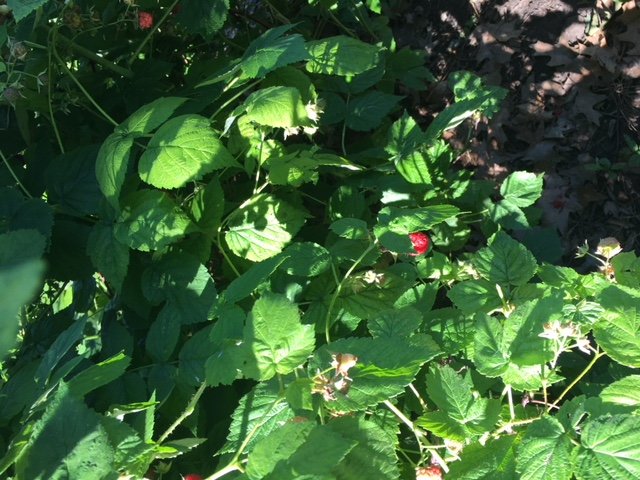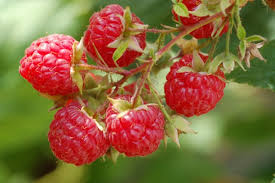About Rubus idaeus/Raspberries: The 2020 herb of the year is Rubus.” Rubus” is a large and diverse superspecies of flowering plants in the rose family. Raspberries, blackberries and dewberries are common, widely distributed members of the genus. This article will focus on raspberries, one of the most common species of rubus.
Raspberries are a perennial shrub with woody stems. Raspberries are not really “berries” in the botanical sense, as they are derived from a single flower with more than one ovary. Technically, the whole berry is an aggregate of small “drupe” fruits, arranged in circular fashion around a hollow central cavity. Raspberries’ taste varies from sweet to acidic.
Health benefits of Raspberries: Raspberries are low in calories and fats but are a rich source of dietary fiber and antioxidants. 100 grams of berries (about 2/3 cup) have just 52 calories but provide 6.5 grams of fiber (16% of RDA). Studies have shown that raspberries:
- Play a potential role in the prevention of cancer, inflammation, and neurodegenerative diseases, due to the antioxidant compounds (raspberries rank in the top ten of high antioxidant fruits and vegetables).
- Can help people with diabetes regulate fluctuations in blood sugar levels, due to the presence of xylitol, a natural sweetener
- Provide about 47% of the RDA of vitamin C in 100 grams (another antioxidant), which can reduce inflammation
- Can help control heart rate and blood pressure, due to abundance of potassium
- Can help metabolize carbohydrates, protein and fats because they contain B-complex and vitamin K.
Growing, selecting, and storing raspberries: to grow, plant in full sun and rich, well-drained soil. Avoid planting where wild brambles, fruit trees, strawberries, melons, tomatoes, potatoes, eggplants or peppers have been grown in the past. Raspberries are most plentiful in stores and farmers markets from June until October. Select berries that are shiny, deep red with attached cap, free of sand and mold. Raspberries perish easily, so they should be purchased a few days before their use. Use within a couple days or freeze in a single layer and store in freezer. To wash, dip in cold water for a few seconds and swish gently a few times to remove sand and insecticide residues. Gently pat dry with a paper towel or cloth. They are best served at room temperature to enhance their flavor.
And, finally…EATING raspberries!
Raspberries can be enjoyed on their own, in yogurt, over breakfast cereal, added to salads, or cooked in muffins, pastries, and other sweets. Many, many recipes are available online. Below are two to get you started. Enjoy!
Raspberry Scones Whisk 2 cups flour, 1/4 cup sugar, 1 tablespoon baking powder and 1/4 teaspoon salt in a large bowl. Work in 6 tablespoons cut-up cold butter with your fingers until it is in pea-size pieces. Stir in 1 cup heavy cream until combined. Fold in 3/4 cup raspberries. Drop 8 scoops of dough onto a parchment-lined baking sheet; brush with heavy cream and sprinkle with sugar. Bake at 425 degrees F until golden, 20 to 25 minutes.
Raspberry-Ricotta Toasts Combine 1 cup fresh ricotta with 1 tablespoon honey; season with salt and pepper. Spread on 4 slices buttered toasted country bread. Top with raspberries, chopped pistachios and honey.
The following publications served as sources for this article:
https://www.nutritionandyou.com
http://berryhealth.fst.oregonstate.edu/health_healing/fact_sheets/red_raspberry_facts.htm
https://www.healthline.com/nutrition/11-reasons-to-eat-berries


